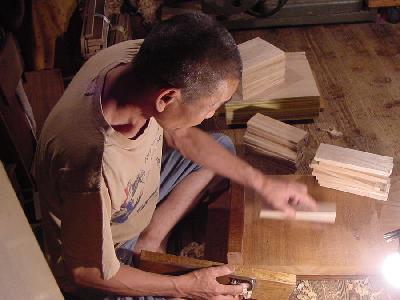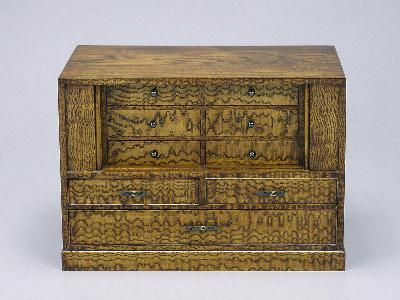|
Edo Sashimono is furniture and woodwork that is assembled without nails, and expresses a cool sense with elegance.
In the Edo period, the Tokugawa shogunate invited craftsmen from all over Japan to set up workshops in Kanda and Nihonbashi.
By the mid-Edo period, the workshops had refined certain styles and skills, one of them being sashimono woodwork.
Without using any visible connection or metal nail, sashimono craftsmen created sturdy yet beautiful wooden pieces, such as mirror-stands, drawers for tea paraphernalia and boxes for inkstones.
In Kyoto, sashimono for the Imperial Court and for the tea ceremony developed. In Edo, sashimono were mainly used by samurais, tradesmen and Kabuki actors.
Edo Sashimono avoids over-decoration and retains a smartness and toughness. Hence, Edo sashimono fully characterizes the cool sense of the Edo people.
In the Edo period, the Tokugawa shogunate invited craftsmen from all over Japan to set up workshops in Kanda and Nihonbashi.
By the mid-Edo period, the workshops had refined certain styles and skills, one of them being sashimono woodwork.
Without using any visible connection or metal nail, sashimono craftsmen created sturdy yet beautiful wooden pieces, such as mirror-stands, drawers for tea paraphernalia and boxes for inkstones.
In Kyoto, sashimono for the Imperial Court and for the tea ceremony developed. In Edo, sashimono were mainly used by samurais, tradesmen and Kabuki actors.
Edo Sashimono avoids over-decoration and retains a smartness and toughness. Hence, Edo sashimono fully characterizes the cool sense of the Edo people.
| [+ADDRESS] | 
|













